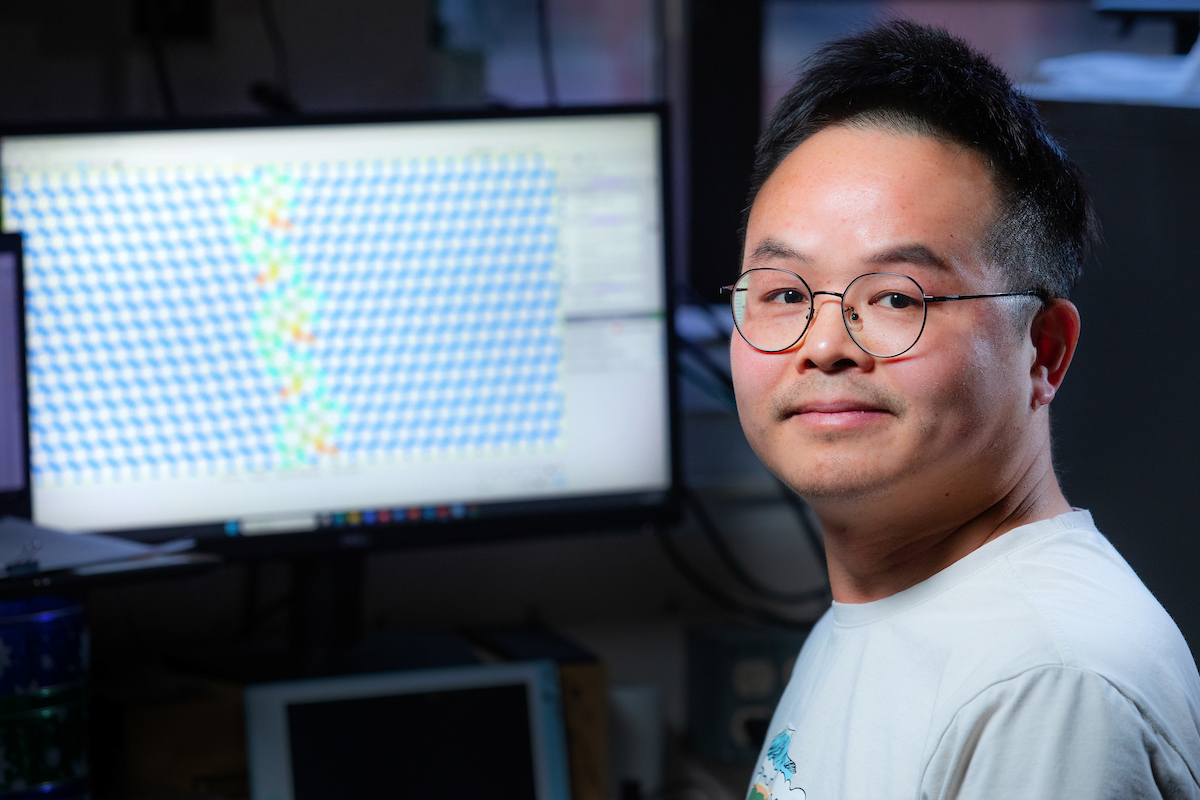
Iowa State's Kun Luo displays the kind of model he creates to illustrate the atomic structures of materials. In this case, he's showing an atomic model of a diamond. Larger photo. Photo by Christopher Gannon/Iowa State University.
AMES, Iowa – In just the first few months of 2024, the journal Nature has published two scientific papers co-authored by Kun Luo, an Iowa State University postdoctoral research associate in materials science and engineering. Here's a short summary of Luo's scientific work and those papers:
Recent publications:
- "Twisted-layer boron nitride ceramic with high deformability and strength," Nature, Feb. 21, 2024
- "Structural transition and migration of incoherent twin boundary in diamond," Nature, Jan. 3, 2024
Research expertise:
"My research aims to unravel the fundamental mechanisms governing the behavior of diverse materials," Luo wrote in a brief biography, "paving the way for developing innovative and high-performance materials across various industries."
Research background:
Researchers at Yanshan University in China led both studies described by the Nature papers. That's where Luo earned master's and doctoral degrees and worked as a postdoctoral fellow from 2017 to 2021.
A second postdoctoral appointment brought Luo to the United States and the University of Nevada, Reno, where he worked with and was mentored by Qi An, now an Iowa State associate professor of materials science and engineering. That connection brought Luo to Iowa State in the fall of 2022.
Luo has a background in experimental science studying superhard materials using techniques in high-pressure physics. He also has expertise in theoretical simulations using machine learning tools to discover the microstructures within materials.
"Throughout my career, I recognized the importance of theoretical simulation in explaining the atomic mechanisms behind the macroscopic behaviors of materials," he said.
At Iowa State, he's working with An "to continue exploring the mechanisms behind material behaviors."
Study contributions:
For these two Nature studies (and another Nature paper published in July 2022, for which he was first author, "Coherent interfaces govern direct transformation from graphite to diamond"), Luo used the same tools and techniques to contribute findings.
He started with real atomic arrangements using the best electron microscope data available, which provided two-dimensional images. Luo used those images to manually construct three-dimensional atomic models with computer software.
"Currently, experiments cannot observe the evolution of these microstructures in situ during phase transitions, movements, or deformation processes," Luo said. "Therefore, effective computational simulations can provide us with a solid theoretical basis to uncover the mechanisms behind these phenomena, ultimately leading to convincing conclusions."
The implications:
Luo said the study described in the 2022 Nature paper about the direct transformation from graphite to diamond resulted in the discovery of a new material called Gradia, a material that has been patented in the United States.
Gradia has mechanical and electrical properties – such as superhardness and conductivity – that Luo said could be applied to new technologies.
And, he said the latest Nature paper about ceramic materials that can be shaped and molded like metals could have applications as heat-resistant or insulating structural materials.
Luo's atomic structure models "are indeed tools of basic science for uncovering novel materials," he said, "and at the same time, they open the gates to more practical applications."






